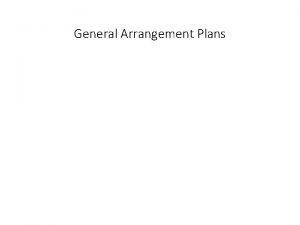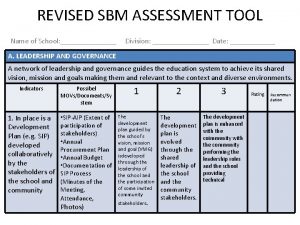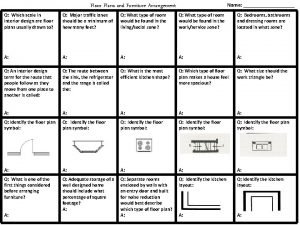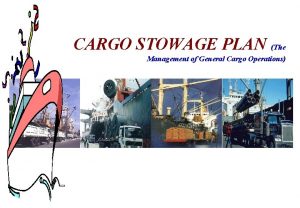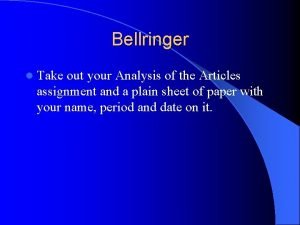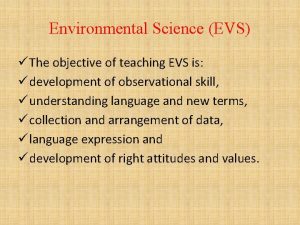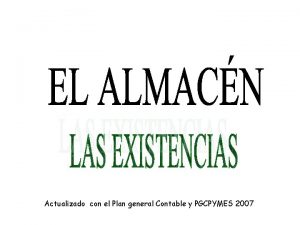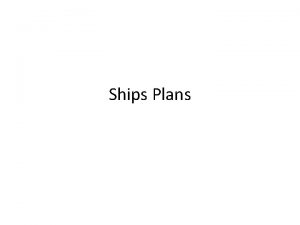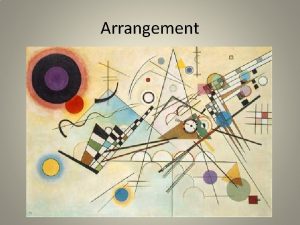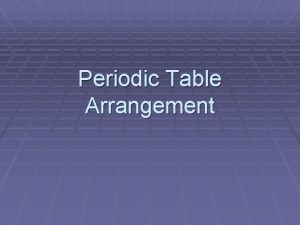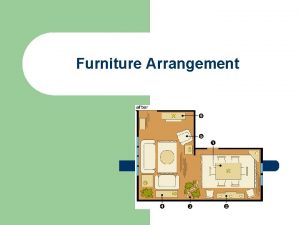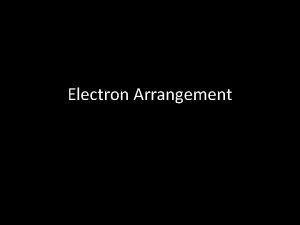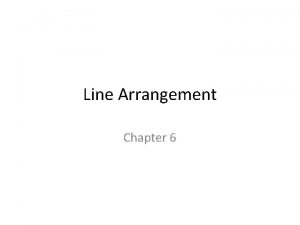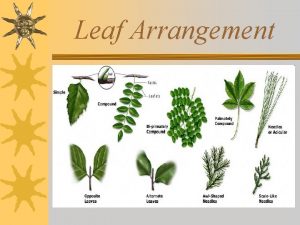General Arrangement Plans General Arrangement Plan GAP General





























- Slides: 29

General Arrangement Plans


General Arrangement Plan (GAP)

General Arrangement Plan (GAP) Depicts the division and arrangement of the ship side view plan views of the most important decks cross-sections The views and sections display: division into compartments (tanks, engine room, holds) location of bulkheads location and arrangement of superstructure parts of the equipment (winches, loading gear, bow thruster, life boats)

Basic data included in the GAP • • • dimensions volumes of the holds tonnage deadweight engine power speed class As weight is added to a ship, it submerges. Maximum DWT is the amount of weight a ship can carry without riding dangerously low in the water.

GAP (Bulk Carrier)


Group Quiz – Annotate significant features o

Annotated Answers a. Upper deck or Main deck b. Forecastle c. Tweendeck d. Tanktop e. Upper hold and Lower hold f. Peak tank g. Chain locker h. Bosun’s locker (paint store) i. Collision bulkheads j. Engine room (Machinery space) k. Steering machinery (gear) l. Double bottom m. Cofferdams n. Superstructure (accommodation) o. Keel

a. Upper deck or Main deck The principal deck of a vessel; in some ships the highest deck of the hull, usually but not always the weather deck; in sailing warships often a deck under the upper deck

b. Forecastle Foremost part of the upper deck, usually raised above the main deck

c. Tweendeck Space between decks – intermediate deck, divides the vessel into separate holds

d. Tanktop Inside bottom of the vessel, the plating forming the inner bottom of a ship hull

e. Upper hold / Lower hold Spaces that contain the cargoes

f. Peak tank Foremost and aftermost spaces of the vessel serve as storage spaces for ballast water capable of absorbing part of the impact forces that are released in case of a collision

g. Chain Locker

h. Bosun’s Locker/Paint Store

i. Collision bulkheads Foremost major watertight bulkhead to prevent the vessel from flooding in case of collision with another vessel (Also fireproof)

j. Engine room(machinery space) A watertight compartment, generally situated over the after peaktank houses the main and auxiliary machinery

On a large percentage of vessels the engine room is located near the bottom, and at the after end and usually comprises few compartments - this design maximizes the cargo carrying capacity of the vessel and situates the prime mover close to the propeller, minimizing equipment cost and problems posed from long shaft lines.

k. Steering machinery Gives the power for moving the rudder

l. Double bottom Provides strength and storage space for fuel, lubricating oil, fresh water, salt (ballast) water and portable water.

m. Cofferdams Empty spaces / longitudinal and transverse separations between tanks which prevent leaking of liquids from one double bottom tank into another.

n. Superstructure Accommodation for the crew and passengers messroom, galley, pantry.

O. Keel A structural keel is a beam around which the hull of a ship is built. The keel runs in the middle of the ship, from the bow to the stern, and serves as a basic foundation or spine of the structure, providing the major source of structural strength of the hull. The most common type of keel is the "flat plate keel“. Duct keels are provided in the bottom of some vessels. These run from the forward engine room bulkhead to the collision bulkhead and are utilized to carry the double bottom piping. The piping is then accessible when cargo is loaded.


Shipboard terminology for position in a ship COLLOQUIAL TERM fore end after end midships part right side left side in front of behind across (the ship) from stem to stern M. E. TERM forward aft amidships starboard s. port s. before / forward of abaft / aft of athwartships fore and aft


 Plangap annuity
Plangap annuity Qoshma gaplar
Qoshma gaplar Compiler bridges the semantic gap between which domains?
Compiler bridges the semantic gap between which domains? Sbm principle 4 management of resources movs
Sbm principle 4 management of resources movs Name arrangement
Name arrangement General arrangement of subatomic particles in the atom
General arrangement of subatomic particles in the atom Alsup ross greene
Alsup ross greene Place/location/destination plan a
Place/location/destination plan a Short term planning and long term planning
Short term planning and long term planning Problem solving plan (plan b flowchart)
Problem solving plan (plan b flowchart) Duration of micro lesson plan is
Duration of micro lesson plan is Problem solving plan (plan b flowchart)
Problem solving plan (plan b flowchart) New jersey plan
New jersey plan Stowage plan for general cargo
Stowage plan for general cargo Pentingnya penentuan tata letak bagi perusahaan jasa
Pentingnya penentuan tata letak bagi perusahaan jasa Mansplan
Mansplan Virginia plan and new jersey plan venn diagram
Virginia plan and new jersey plan venn diagram Va plan nj plan great compromise
Va plan nj plan great compromise People don t plan to fail they fail to plan
People don t plan to fail they fail to plan Business overview template
Business overview template Elemento 2 del plan contable
Elemento 2 del plan contable General objectives of evs
General objectives of evs Allied core value rbp plan
Allied core value rbp plan Non recursive algorithm
Non recursive algorithm Sofa plan
Sofa plan Plan general contable actualizado
Plan general contable actualizado Planos en cinematografia
Planos en cinematografia Where did general lee surrender to general grant?
Where did general lee surrender to general grant? Business plans derby
Business plans derby Plans and elevations worksheet
Plans and elevations worksheet
